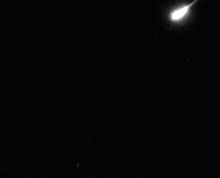Aurigids
Aurigids is a meteor shower occurring primarily within September.[1]
| Aurigids | |
|---|---|
 Celestial map of Auriga | |
| Parent body | Kiess (C/1911 N1) |
| Radiant | |
| Constellation | Auriga |
| Right ascension | 6h 4m -0s |
| Declination | +39° 00′ 00″ |
| Properties | |
| Occurs during | August 28 to September 5 |
| Date of peak | August 31 |
| Velocity | 66 km/s |
| Zenithal hourly rate | 6 |
The comet Kiess (C/1911 N1) is the source of the material that causes the meteors. The comets orbital period is stated as approximately 1800 to 2000 years, with showers observed in the years 1935, '86, '94 and 2007 .[2][3]
α & δ
The Alpha were discovered by C. Hoffmeister and A. Teichgraeber, during the night of 31 August 1935.[4][5]
References
- © 1997-2011 International Meteor Organization retrieved 16:55 11.10.11
- Jenniskens, P. and J. Vaubaillon (2007), An unusual meteor shower on 1 September 2007, Eos Trans. AGU, 88(32), 317, doi:10.1029/2007EO320001 16:14 11.10.11
- IAU-MDC Archived 4 March 2016 at the Wayback Machine retrieved 16:25 11.10.11
- Gary W. Kronk website Archived 15 September 2017 at the Wayback Machine 17:35 11.10.11
- article written by Joe Rao in Sky and Telescope magazine 23 August 2007 approx' 17:45 retrieved 11.10.11
Sources
- aurigid.seti 16:35 11.10.11
External links
- C Hoffmeister:Meteorstrome-Meteoric-currents-WorldCat 17.41 11:10:11
Chart
- Aurigidcount AMES research centre 16:35 11.10.11
This article is issued from Wikipedia. The text is licensed under Creative Commons - Attribution - Sharealike. Additional terms may apply for the media files.
